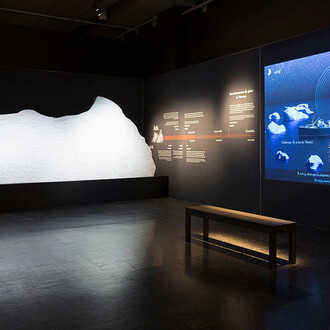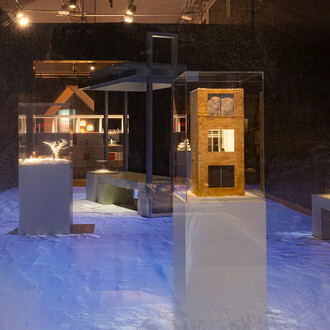The Rediscovered Colony traces the history of the first France in America through artifacts found and research done on the Cartier-Roberval archeological site.
The exhibition explores an unprecedented page in Québec history, the establishment of the very first French colony in the Americas in the mid-sixteenth century, 60 years before the arrival of Champlain.
The exhibition focuses on a crucial and yet forgotten period of our history, challenging traditional historical versions.
From the beginning of the visit, the exhibition reminds visitors of the popular story of Jacques Cartier, the one textbooks have always told about this national hero, known as the "explorer who discovered Canada". During his two voyages in 1534 and 1535 he claimed the land for the King of France.
But what about Jean-François de La Rocque de Roberval?
In 1541, King Francis I mandated Jean-François de La Rocque de Roberval to lead a large-scale colonial project. The Cap Rouge Promontory seemed predestined. In 2005, the ground offered up the passage of these explorers through a small shard of Renaissance Italian porcelain. Jacques Cartier had stayed with the expedition because of his skillful navigation talents.
Why are historians less talkative about this voyage?
Nobles, commoners, soldiers, tradesmen and prisoners were part of a microcosm of French society with its characteristic hierarchy, which remained intact even in the middle of the woods!
On the program at the exhibition: audio stories, unique video creations, the first depiction of the fort, multimedia scenography, and about one hundred 16th century objects.
In 2005, the discovery of a shard of Renaissance Italian porcelain on the Cap Rouge promontory caused a wave of excitement!
The ensuing research conducted on the Cartier-Roberval site unearthed over 6,000 artifacts.
This magnificent exhibition is the culmination of three seasons of intensive excavations on the site and six years of research by experts from twenty scientific disciplines.
















